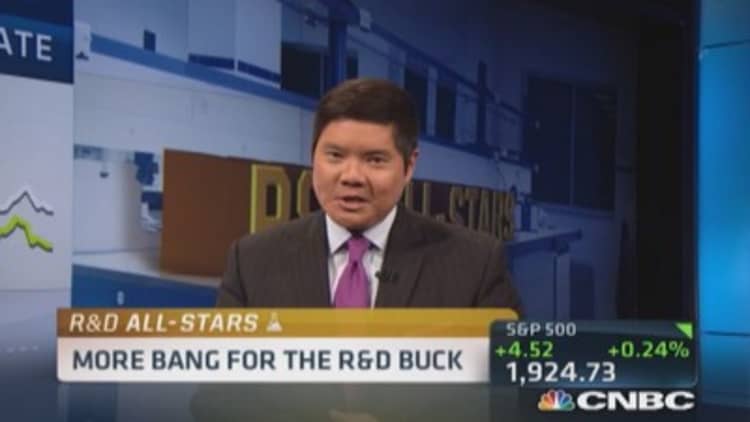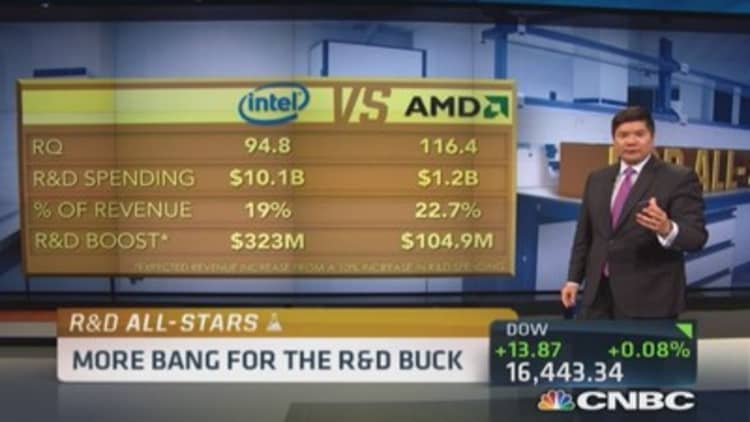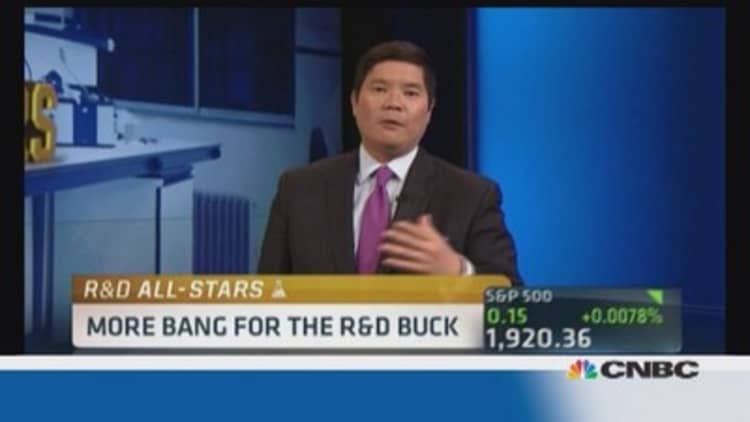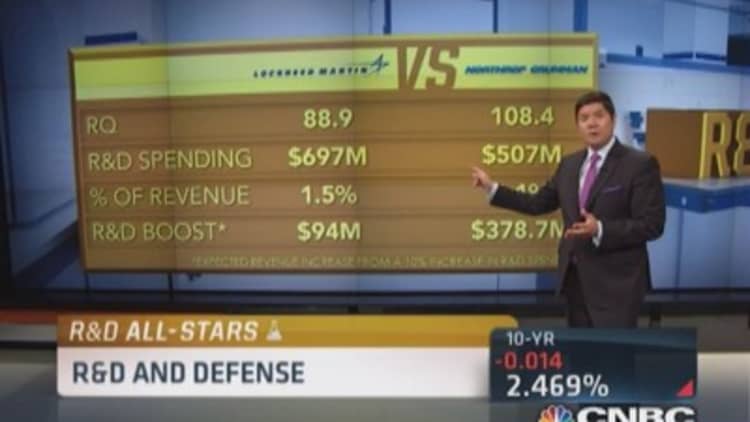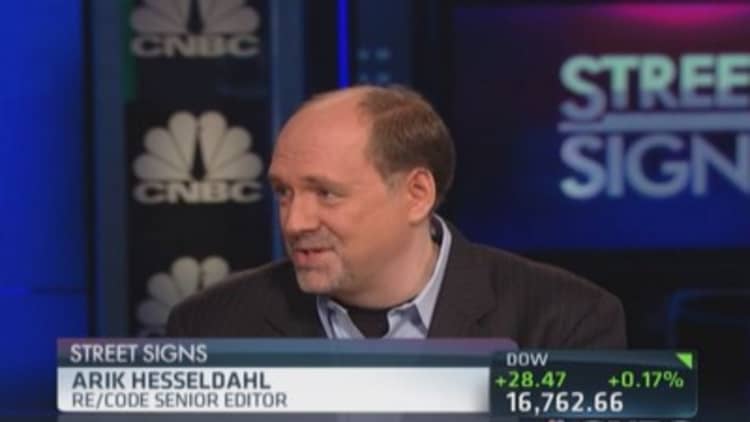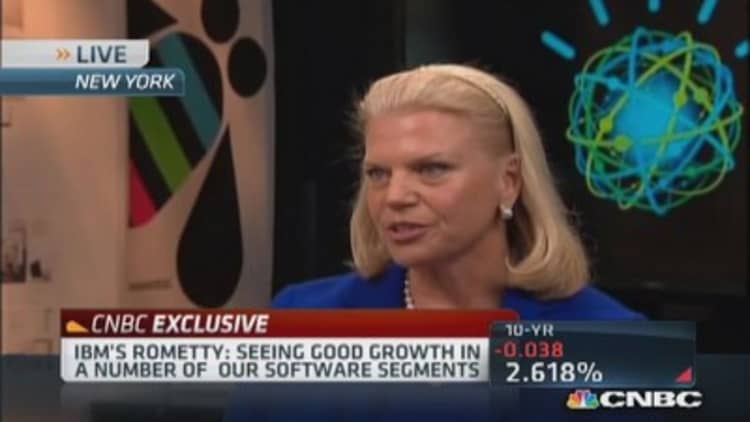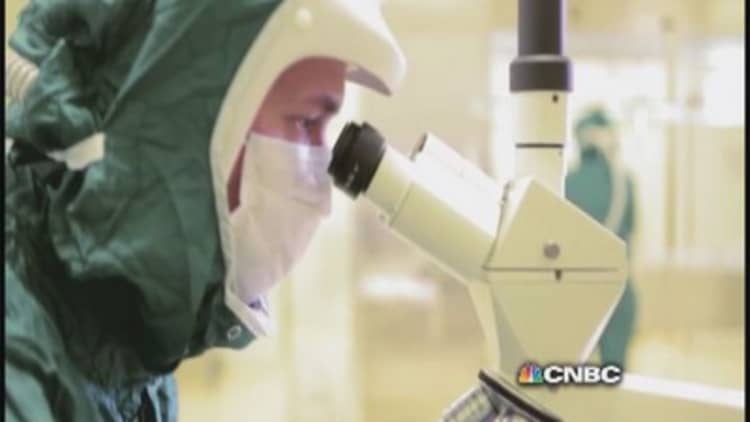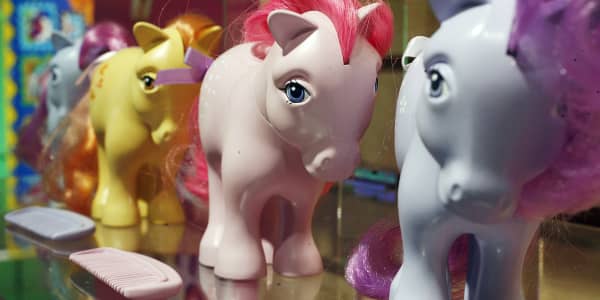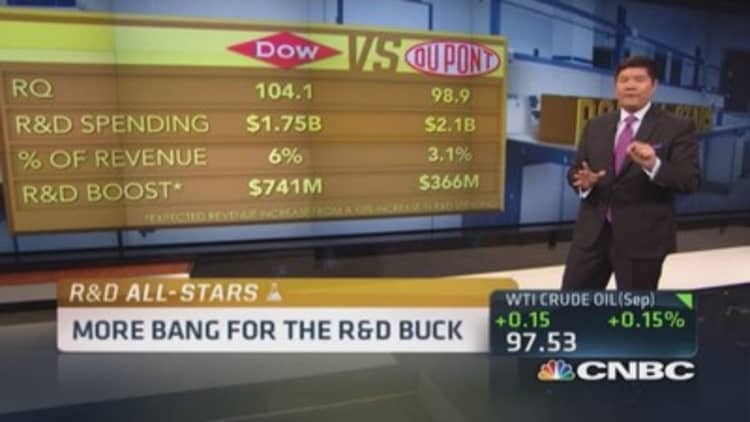
"Innovate or die" may be a Silicon Valley mantra, but it's one that many companies in more traditional industries have embraced. In fact, if you're going to risk your investing money making bets on the value of innovation, you might do well by looking away from Silicon Valley.
Last year computing and software companies together accounted for one-third of all R&D spending, according to The Global Innovation 1000 Study from Booz & Co. However, simply adding up the R&D dollars and ranking companies based on who spent the most won't identify nearly all the companies adding steadily to shareholder wealth through innovation.
That's the message in the first-ever CNBC RQ 50 ranking, a list of the market's smartest—not biggest—R&D spenders. Looking past Silicon Valley buzz can help investors locate the "boring edge" of innovation, where shareholder wealth is being created by companies such as Oshkosh, Dow Chemical and Xerox.
"RQ is NOT about spending. It's about productivity of that spending," said Anne Marie Knott, professor of strategy at Washington University in St. Louis and creator of the Research Quotient (RQ) model for measuring optimal R&D.
This year Oshkosh had a higher RQ (a measure of R&D productivity that links R&D spending to corporate revenue growth and market value) than Silicon Valley darlings like Google and Netflix.
How did Oshkosh do it? A good place to begin answering this question is with a fire hydrant.
"A hose that fits a hydrant in Phoenix will not fit a hydrant in New York City," said Gary Schmiedel, executive vice president of technology at Oshkosh, the market leader in fire truck manufacturing. "It's not exactly high tech, but from a practical standpoint, you have to deal with all those things."
The average buyer of a fire truck has about 20,000 options to consider, according to Oshkosh. There are decisions to be made about suspension, ladder height, color and water pumping.
Read MoreThe all-time R&D hall of fame: Who got in?
Product challenges with many variables require innovation, but the products don't need to be sexy to require advanced R&D thinking. At Dow Chemical, a product as ordinary as exterior house paint is a global innovation challenge. When designing a new paint, Dow needs to take into account the materials that are most commonly used for home exteriors across the regions of the U.S., and the fact that in Saudi Arabia the sand will erode paint, and that in India it pours for months every year.
"How can one project attack all of those problems?" said A.N. Sreeram, vice president of research and development at Dow.
Not just dealing with but also constantly improving and rethinking all of the variables has made Oshkosh a hotbed for innovation. One of the company's most popular fire truck innovations is Side-Roll Protection: a system of electronic sensors, automatic-tighten seatbelts and side-curtain air bags developed, in part, as a response to a troubling number of firefighter deaths en route to the scene of a fire (since 2004, 62 firefighters have been killed while driving or operating their vehicles, according to the U.S. Fire Administration).
You may not expect to hear it from Oshkosh, but Schmiedel said, "If we don't innovate, we die."
The customer comes before Wall Street
Companies like Oshkosh, Dow and Xerox don't like to use the term R&D spending.
"The value investors and day traders see R&D as an expense, so we target the long-term growth investors and tell the growth story," Sreeram said.
At Xerox, now 75 years old and the epitome of old tech, R&D is an investment. That distinction has allowed Xerox to transform itself into a provider of business services as the need for its eponymous machines faded and the world becomes ever-more paperless.
As a company we have successfully surfed the wave of transition in our market and not been swept away from it by trying just to keep selling ink and toner.Sophie VandebroekXerox chief technology officer
Xerox puts about 15 percent of its R&D investment toward unknown outcomes, with the understanding that a failed effort will pay off in other ways.
"We have successfully surfed the wave of transition in our market and not been swept away from it by just trying to keep selling ink and toner," said Xerox chief technology officer Sophie Vandebroek.
The approach is a reflection of the fact that when it comes to R&D, the customer—not Wall Street and investors—comes first, but in the end, earnings will grow as a result of the efforts. Sreeram said, "We don't go to Wall Street taking the approach, 'Here is what R&D is doing for you.' On average, our customers realize the value of R&D faster than someone on Wall Street."
Most Xerox R&D investment decisions begin by asking customers what they want or what they dream up. "If you just give them what they want," Vanderbroek said, paraphrasing a quote often attributed to Henry Ford, "all they'd ask for is a faster horse."
Read MoreWhich companies have the highest R&D IQ?
One path to innovation started nearly three decades ago, when Xerox began looking at how to help its customers process the information on the documents they were printing and copying. The company invested in automated natural language processing, developing software that could understand unstructured information in official documents. The resulting technology is now at the core of high-margin services for Xerox, including everything from health-care claims processing to license plate identification in highway HOV lanes.
Every new Dow product is tracked for five years to see how its EBITDA compares with older product lines, and company-wide new products resulting from R&D have a 1,000-basis-point edge over older Dow lines.
"If I invest a chunk of [R&D] dollars in a given technology approach, I want to have three, four or five different market opportunities," Schmiedel said. For example, Oshkosh first introduced independent suspension technology in a very small segment of its fire-rescue business, but soon defense and municipal customers expressed a need for the same technology, and the product was expanded.
Faster, better R&D
Since joining Dow in 2006 from DuPont Electronic Technologies—the first senior R&D leader brought in from the outside by the 117-year-old company—Sreeram has brought in roughly 100 new scientists annually and introduced new technology that lowers the cost of individual R&D experiments. Dow had a large R&D staff in many businesses and departments, with 100 PhDs—90 to 95 of them organic chemists, Sreeram said. Nine out of 10 efforts failed. "We wanted to improve the probability of success," he said.
Dow kept the 100 scientists but diversified the mix to include more chemical engineers, material scientists and statisticians, in addition to having robots carry out experiments, to improve success rates and speed up the pace of discovery. Since the transformation of Dow's R&D philosophy, Sreeram said Dow is succeeding with 3 out of 4 rather than 1 out of 10 R&D efforts, and more rapidly.
Read MoreHow does the CNBC RQ 50 differ from other innovation rankings?
At Oshkosh, the discovery process is surprisingly fast. New technologies tend to spend just one to two years in development at Oshkosh, and the promise of guaranteed demand can make that even shorter. For example, a mine-resistant ambush-protected vehicle commissioned by the U.S. Defense Department went from concept to delivery in 11 months. Oshkosh's Side-Roll Protection system was taken from initial concept to marketability in less than two years. The key, Schmiedel said, was a "very clear definition of what success looks like."
Even for companies on the boring edge of innovation, there's nothing wrong with having a couple of moonshots in the pipeline. Oshkosh has been developing autonomous vehicles, responding to the Defense Department's expressed desire to put fewer soldiers in harm's way, by using supply convoys that drive themselves.
—By CNBC's David Spiegel
